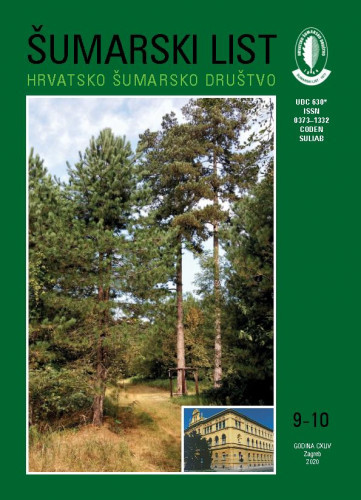Cilj ovoga rada je pokazati važnost očuvanja šuma, kao jednog od temelja kulturne baštine Republike Hrvatske. Šume su prirodno bogatstvo i izvor drva koje se primjenjuje u restauraciji drvnih predmeta visoke umjetničke vrijednosti, s naglaskom na posebne restauratorske vještine, umjetničke izrade intarzija. Furniri kao drvni proizvodi, dobiveni tehnološkim procesima su u sredini tehnološkog procesa između održavanja šuma i izrade intarzija. Drvo je materijal koji se koristi kroz povijest, te mu se pravilnim održavanjem i uporabom produljuje životni vijek. Intarzija je umjetnička tehnika koja se intenzivno razvila u 13. stoljeću, a potječe još iz doba Egipta i Rima. Sastoji se od jednostavnog umetanja materijala za ukrašavanje površina ili predmeta. Furniri su najvažniji element za izradu intarzije. Tijekom povijesti razvilo se nekoliko načina izrade, od kojih se izdvajaju sljedeće tehnike: Tarsia certosina, Tarsia geometrica, Tarsia a toppo, Tarsia a Incastro nazvana Boulleova tehnika. U radu je prikazana najjednostavnija ručna izrada intarzije sa zadanim motivom. Prikazom jednostavne intarzije opisan je proces od izbora furnira do izrade intarzije Boulleovom tehnikom, te zaključkom da fina umjetnost počiva i razvija se iz šume.; The aim of this paper is to show the importance of forest protection as one of the factors of the preservation of Croatian cultural heritage. Forests are a natural resource and a source of material used in the restoration of wooden objects of artistic value and in this case it is about a specific restoration skill - the art of marquetry. Veneers as wood products obtained by technological processes play a very important role in terms of forest protection and marquetry. Wood is a material that has been used throughout history, and its proper maintenance and use prolong its lifespan. It must be emphasized that this material has distinct physical, mechanical, chemical and aesthetic properties. This paper focuses on its aesthetic properties: lustre, fineness, colour and texture. Marquetry is an art technique developed in the 13th century which has its roots in ancient Egypt and Rome. It is the art of inserting materials to decorate surfaces and objects. Veneers are the most important element of marquetry. Several methods of marquetry developed through history, of which the following stand out: Tarsia certosina, Tarsia geometrica, Tarsia a toppo, Tarsia a Incastro called Boulle’s technique. This paper presents the simplest hand-made marquetry with a given motif. An overview of simple marquetry covers the entire process starting with the selection of veneer to the making of marquetry by the Boulle technique. The development of marquetry technique through history was accompanied by the development of tools for veneer processing and marquetry. Rich inlays created by Boulle’s technique on authentic chests of drawers and closets of great cultural value found in the holdings of Dubrovnik museums prove that the rich cultural heritage is much more than just a one-sided approach to observing all segments mentioned in this paper which are different and yet related interdisciplinary. Therefore, it could be said that fine art rests in the forest.
Sažetak

 Šumarski list : znanstveno-stručno i staleško glasilo Hrvatskoga šumarskog društva = journal of the Forestry Society of Croatia = Zeitschrift des Kroatischen Forstvereins = revue de la Societe forestiere Croate : 144, 9/10(2020) / glavni urednik Josip Margaletić.
Šumarski list : znanstveno-stručno i staleško glasilo Hrvatskoga šumarskog društva = journal of the Forestry Society of Croatia = Zeitschrift des Kroatischen Forstvereins = revue de la Societe forestiere Croate : 144, 9/10(2020) / glavni urednik Josip Margaletić.